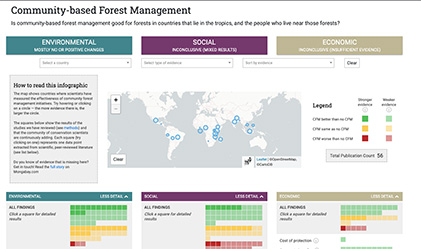The Indian Forest Story News
India is the second-most populous country in the world, and one of the most biodiverse. The constant juxtaposition of people and forests has resulted in a 'conservation versus development' narrative, which needs to change. The fact that a forest is much more than a stand of trees needs to be communicated, to people and policymakers alike. The positive impacts of forests are diverse and far-reaching, a testimony to the interconnectedness of the environment we live in. India’s size and geographical location makes the country’s forests unique. The country straddles the tropical and temperate latitudes, resulting in the rich biodiversity of the tropical evergreen and deciduous forests, and the temperate forests of the northern latitudes. Home to the world's tallest mountains - the Himalayas - rising above the snowline, the temperate forests turn into tundra and Alpine meadows. The Himalayas stretch into the northeastern part of the country, from where other mountain ranges turn perpendicular and run right down into the Irrawaddy delta and beyond in Myanmar and Thailand. Ensconced between these ranges, the forests of the northeast pack their tropical character in the temperate latitudes. As if to compensate, in the tropical latitudes of peninsular south India, the higher ridges of the Western Ghats rise to become temperate sky islands. Thus the shola forest plus grassland ecosystem of the upper Western Ghats plateaus add as much to the India’s forest matrix as the tropical rainforests in the lower-level valleys. Stretching over the Deccan Plateau, the dry and moist-deciduous teak and sal forests of the central plateau and the Eastern Ghats complement the mosaic of forest types in the country. In the southern reaches of the Eastern Ghats it is the dry evergreen forests that hold sway. The mangrove forests of the Sundarbans, Gujarat coast, Tamil Nadu coast and peri-urban Mumbai complete India’s forest mosaic. Through this series, Mongabay-India will strengthen the nuance and depth of the discussions around forests — in maintaining ecological security for ecosystems, livelihood security for communities, climate resilience and for the provision of ecosystem services.




































